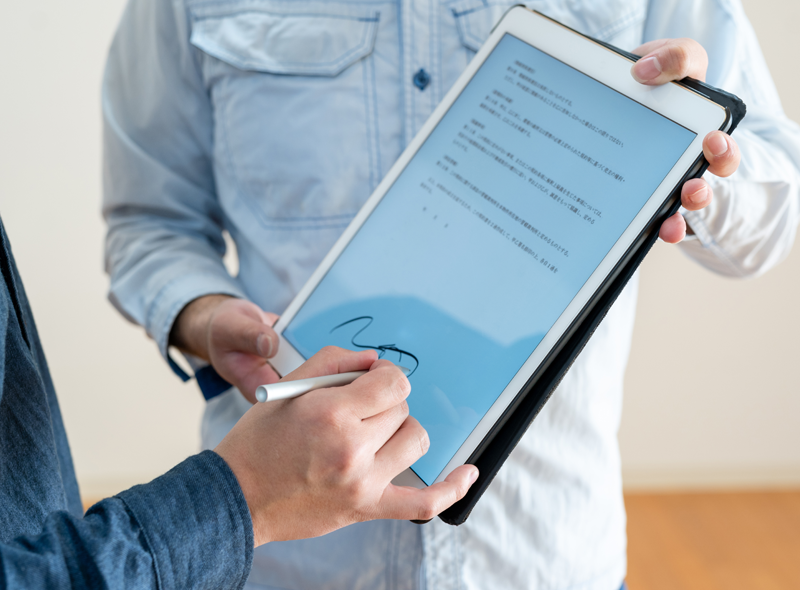How to Build an Effective Contract Renewal Strategy for Long-Term Value

- Last Updated: Oct 28, 2025
- 15 min read
- Arpita Chakravorty
Imagine this: your existing contracts are about to expire, and several suppliers or service providers have reached out with renewal offers. You face a choice — accept the renewal, renegotiate terms, or explore alternative options. At first glance, contract renewal might seem like a simple administrative step. But in reality, renewal is a critical strategic junction that can unlock substantial value, mitigate risks, and strengthen partnerships if approached thoughtfully.
This resource lays out a practical, industry-agnostic contract renewal strategy framework. Whether you work in SaaS subscriptions, manufacturing supply chains, professional services, or beyond, understanding the core steps and considerations will empower you to manage renewals confidently and avoid common pitfalls.
What Is a Contract Renewal Strategy and Why Does It Matter?
A contract renewal strategy is a structured approach to reviewing, negotiating, and executing extensions or new agreements at the end of existing contract terms. Its purpose goes far beyond merely extending deadlines. Instead, it serves as a business checkpoint to:
- Assess vendor or partner performance and compliance
- Evaluate changing needs and market conditions
- Identify savings or value-add opportunities
- Align internal stakeholders on objectives and decisions
- Mitigate risks such as auto-renewal traps or overlooked termination clauses
Taking a strategic stance on renewals transforms routine contract management into an opportunity to improve operational efficiency and business outcomes.
For a clear, repeatable approach to managing this stage effectively, see our guide on the Contract Renewal Process to streamline reviews, negotiations, and decision-making.
Differentiating Renewal from Extension and Auto-Renewal
- Renewal refers to negotiating a new term for the contract, potentially with adjusted terms, pricing, or scope.
- Extension usually means prolonging the contract period without major changes.
- Auto-renewal is a clause that automatically renews contracts unless action is taken to terminate.
Understanding these distinctions is critical to applying the right processes and timelines effectively.
The Contract Renewal Lifecycle: A Universal Framework
Research from industry leaders shows contract renewal typically follows a six-phase lifecycle. This lifecycle applies broadly across industries, providing a reusable model:
1. Renewal Readiness Assessment
Begin by reviewing the contract portfolio to identify which contracts are up for renewal and prioritize them based on value and risk. This phase includes gathering performance data, assessing compliance, and preparing internal teams.
2. Contract Review and Performance Analysis
Analyze contract terms, evaluate the vendor’s fulfillment against SLAs (service-level agreements), and review historical issues or opportunities. This step uncovers areas where renegotiation may be justified.
3. Notice and Timeline Management
Ensure visibility on renewal and termination deadlines. Missing these dates can trigger unwanted auto-renewals or loss of negotiation leverage. Developing a timeline with clear deadlines is essential.
4. Negotiation Strategy and Execution
Define renewal objectives aligned with business goals, prepare for negotiations with data-driven insights, and engage relevant stakeholders (legal, procurement, finance). This phase is where terms can be optimized or expanded.
5. Renewal Agreement Execution
Once terms are agreed upon, finalize contract amendments, capture signatures, and update your centralized contract repository for easy retrieval.
6. Ongoing Monitoring and Performance Tracking
Post-renewal, continue tracking vendor performance and compliance to set the stage for the next renewal cycle and ensure value delivery.
This lifecycle aligns with broader Contract Lifecycle Management Stages while emphasizing renewal-specific touchpoints.
Key Performance Indicators (KPIs) to Guide Renewal Decisions
Data should guide your renewal strategy rather than gut feelings. Consider tracking these KPIs to measure contract health and readiness:
- Renewal Rate: Percentage of contracts successfully renewed on favorable terms.
- Churn Rate: Contracts lost or non-renewed voluntarily.
- Cost Savings Achieved: Discounts, rebates, or efficiencies realized through renegotiations.
- SLA Compliance: Percentage of service-level targets met by vendors in the prior term.
- Vendor Performance Scores: Aggregate quality, delivery, and responsiveness metrics.
Tracking these KPIs over time allows teams to prioritize renewals, identify underperforming vendors, and report clear value to stakeholders.
Cross-Functional Governance: Who Should Be Involved?
Effective renewals require teamwork across departments:
- Procurement typically leads vendor and contractual negotiations.
- Legal ensures compliance and proper risk management.
- Finance assesses budget impacts and cost-benefit calculations.
- Contract/Relationship Managers or Customer Success teams monitor ongoing performance and future needs.
- Business Units/Operations provide input on operational impacts and requirements.
Creating a formal governance model with defined roles, approval thresholds, and regular renewal reviews keeps efforts aligned and accountable.
Common Pitfalls and How to Avoid Them
Several renewal challenges are frequently overlooked:
- Auto-Renewal Surprises: Contracts that auto-renew without timely alerts can lock organizations into unfavorable terms. Maintain a clear calendar of renewal notices.
- Siloed Data: Renewal teams often lack access to performance and financial data needed to negotiate effectively. Integrate contract management with analytics and financial systems.
- Misaligned Objectives: Without cross-functional input, renewals may omit business requirements or compliance needs. Establish collaborative planning sessions.
- Ignoring Market Dynamics: Failing to benchmark terms or market alternatives can cause overspending or missed opportunities. Regularly engage in market intelligence gathering.
Addressing these areas proactively leads to better renewal outcomes.
To overcome these challenges and turn renewals into value-driven opportunities, organizations need a well-defined contract renewal strategy.
Building a Strong Contract Renewal Strategy
A contract renewal strategy goes beyond tracking dates — it’s about intentional planning and continuous improvement. The most effective strategies combine insights, automation, and governance to ensure every renewal decision aligns with evolving business goals. Here’s how to structure yours:
- Centralize Renewal Data: Create a unified repository to store renewal timelines, KPIs, vendor performance data, and previous negotiation outcomes. This ensures teams operate from a single source of truth.
- Segment Contracts by Value and Risk: Not every renewal deserves equal attention. Classify high-value, high-risk contracts for detailed reviews and automate routine renewals with predefined guardrails.
- Start Early: Initiate renewal discussions well before expiration — ideally 90–120 days prior — to leave room for benchmarking, negotiation, and internal alignment.
- Use Data to Negotiate Better: Leverage metrics such as SLA adherence, spend patterns, and historical compliance performance to strengthen negotiation positions.
- Embed Continuous Feedback: Post-renewal reviews should capture lessons learned to improve future renewal cycles and vendor relationships.
A well-executed renewal strategy transforms what was once a reactive administrative process into a measurable business advantage — ensuring efficiency, cost optimization, and long-term value.
Tailoring Contract Renewal Strategies Across Industries
While the universal framework applies broadly, each sector has nuances worth noting:
- Healthcare and Life Sciences: Requires heightened attention to regulatory compliance and data privacy clauses when renewing vendor contracts.
- Manufacturing and Supply Chain: Emphasizes delivery SLAs, volume commitments, and penalty clauses due to complex supplier networks.
- Technology and SaaS: Often involves subscription terms, usage analytics, and auto-renewal management with rapid innovation cycles.
Detailed appendices and industry-specific templates can help teams adapt the universal strategy appropriately.
Practical Tools to Support Your Contract Renewal Workflow
Multiple asset types assist teams at every renewal stage:
- Renewal Assessment Templates: Structured checklists to evaluate performance, contract terms, and risk.
- Negotiation Checklists: Guidance on key topics, objectives, and fallback positions.
- Renewal Playbooks: Step-by-step workflows outlining tasks, timelines, and team responsibilities.
- Renewal Readiness Scorecards: Dashboards aggregating KPIs to flag upcoming renewals and prioritize.
- Decision Trees: Visual aids to walk through whether to renew, renegotiate, or terminate based on inputs.
Leveraging these resources creates repeatable, scalable processes and reduces ad hoc decision-making.
How Technology Accelerates and Scales Renewal Success
Modern Contract Lifecycle Management (CLM) platforms, especially those powered by AI, enable:
- Automated alerts on critical dates and renewal deadlines
- Extraction and analysis of renewal clauses and performance data
- Centralized repositories for contract and negotiation histories
- Data-driven insights highlighting risk and opportunity areas
- Workflow orchestration across legal, procurement, and finance teams
These solutions help transform contract renewal from a manual, reactive task to a strategic, proactive capability.
This is where Sirion steps in — enabling enterprises to manage renewals with intelligence, automation, and precision.
For improving renewal outcomes consistently across suppliers and agreements, explore Contract Management Strategies to build scalable, repeatable decision and negotiation frameworks.
How Sirion Empowers Smarter Renewals
Renewals often fail because information lives in silos — spreadsheets, emails, and legacy tools that don’t talk to each other. Sirion changes that by giving enterprises a single AI-driven command center for renewal intelligence.- Automated Renewal Alerts: Sirion proactively flags upcoming renewals, auto-renewal risks, and critical dates, ensuring nothing slips through the cracks.
- AI-Powered Clause and Obligation Extraction: The Sirion AI Extraction Agent identifies key renewal clauses, notice periods, and obligations across large contract portfolios in seconds.
- Performance Insights for Better Negotiation: The platform consolidates SLA and spend data to reveal vendor performance trends — arming legal, procurement, and finance teams with insights to renegotiate better terms.
- Seamless Collaboration: With workflows that connect Legal, Procurement, and Finance, Sirion ensures alignment across all stakeholders in every renewal decision.
- End-to-End Audit Trail: Every change, approval, and negotiation step is automatically recorded for future reference and compliance audits.
Conclusion: Turning Renewals into Strategic Wins
Renewal isn’t just the end of a contract — it’s the start of a smarter one. By adopting a structured renewal strategy supported by AI and data-driven insights, organizations can move from reactive extensions to proactive value creation. When renewal readiness, performance analytics, and stakeholder collaboration come together in one unified system — as they do with Sirion — enterprises gain control, foresight, and measurable advantage. Contract renewal, done right, isn’t maintenance — it’s momentum.FAQs About Contract Renewal Strategies
When is the best time to start preparing for a contract renewal?
Ideally, organizations should begin renewal readiness activities between 90 to 180 days before the contract expires. This allows sufficient time for reviews, stakeholder alignment, and negotiation.
How does auto-renewal impact contract strategy?
Auto-renewal clauses can bypass active negotiations if renewal notices are missed. It is important to track these clauses and manage notice windows to maintain control over renewal terms.
What roles do KPIs play in renewals?
KPIs help quantify vendor performance, contract value, and risk factors. Data on renewal rates, SLA compliance, and cost savings can prioritize contracts for renegotiation and guide negotiation strategies.
Which departments should collaborate on contract renewals?
Procurement, legal, finance, contract management, and business units all should be involved. Collaboration ensures renewals meet organizational, operational, and compliance requirements.
Can renewal strategies differ between industries?
Yes, for example, healthcare requires regulatory oversight, manufacturing focuses on supply chain terms, and SaaS contracts emphasize subscription management. However, a universal renewal lifecycle can be tailored to fit each context.
How can technology assist with contract renewals?
Advanced CLM platforms automate deadline tracking, extract key contract data, integrate performance metrics, and facilitate collaborative workflows to streamline renewal management.


